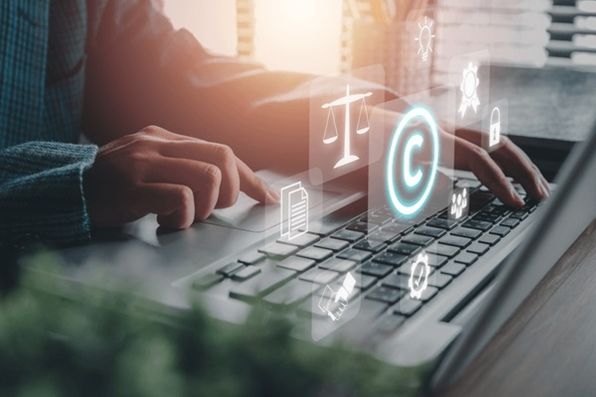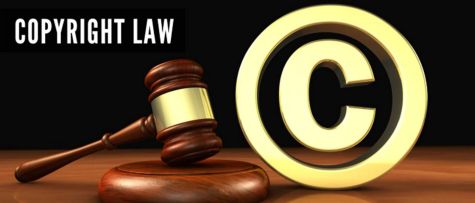INTRODUCTION
Copyright is a bundle of rights which the author or originator of certain intellectual works is entitled to. These intellectual works include musical works; films; photographs; literary works, such as novels, sound recordings, and so on. Such creations are the fulcrum of the entertainment and advertising industries; accordingly, legal developments in the Nigerian copyright regime have a consequential effect on both industries.
Until recently, copyright was regulated by the Copyright Act of 1999 (the "Old Act"), an outdated piece of legislation which failed to address several copyright issues that had arisen with technological advancements. It was therefore a great day for all IP stakeholders when the new Copyright Act 2022 (the "New Act") was signed into law on March 17, 2023.
While some of the provisions of the New Act are adaptations of the provisions contained in the Old Act, the New Act includes several novel provisions which have a significant impact on the entertainment and advertisement industries. Some of these key provisions and their impact are highlighted below.
WORKS PROTECTED UNDER THE COPYRIGHT ACT
One of the works protected under the Old Act was cinematograph films which was defined to include "the first fixation of a sequence of visual images capable of being shown as a moving picture and of being the subject of reproduction and includes the recording of a soundtrack associated with the cinematograph film". Under the New Act, "Cinematograph films" is replaced with "Audiovisual Works", which is defined as the "aggregate of a series of related visual images with or without sound, which is capable of being shown as a moving picture by means of mechanical, electronic or other device and irrespective of the nature of the material on which the visual images and sounds are carried and includes the soundtrack but does not include broadcast"1.

The important difference between "Cinematograph Films" as defined in the Old Act and "Audiovisual Works" in the New Act is that the latter covers a wider scope of content and extends the ambit of the protection to mechanical, electronic, or other devices where such content are carried.
MAKING AVAILABLE TO THE PUBLIC
The New Act introduces an exclusive right "to make a work available to the public by wire or wireless means in such a way that members of the public are able to access the work from a place and at a time independently chosen by them". The foregoing right is granted to owners of copyright in literary works, musical works, artistic works, audiovisual works, sound recordings, broadcasts, and for performers2. This right expressly extends the scope of copyright protection to digital mediums and platforms where content can be uploaded and accessed by the public at any time, such as Video-on-Demand platforms, like Netflix; music streaming platforms like Spotify; and any other wireless mediums for on-demand, interactive communication through the Internet that may arise in the future.
REMUNERATION FOR BROADCASTING OF SOUND RECORDINGS
According to the New Act, the performer and owner of copyright in sound recordings published for commercial purposes shall enjoy the right to equitable remuneration for any broadcast of such sound recording from the person who uses the sound recording.3 Sound recordings made available to the public by wire or wireless means in such a way that it may be accessed by members of the public from a place and at a time independently chosen by them shall be deemed as published for commercial purposes.4
This much needed provision serves to aid music artistes in preventing the indiscriminate exploitation of their works through public broadcasts. To preserve this right, the New Act stipulates that the performer and owner of copyright in a sound recording shall have a right to the logs, statements and information relating to the broadcast of the sound recording.5 Accordingly, the amount of remuneration and the conditions of payment shall be as agreed between the users of the sound recordings, the performer and owner of copyright in sound recordings or their representatives; and where the parties fail to reach an agreement, it shall be determined by the NCC.6 Also, distribution of the remuneration between the performer and the owner of copyright in the sound recording shall be determined by the NCC, subject to any agreement between the parties.7 Additionally, the New Act provides that if more than one Collective Management Organization (CMO) receives remuneration on behalf of a performer/owner of copyright in the sound recording, such CMOs must agree on which one of them will collect such remuneration, failing which, the NCC would intervene.8
OWNERSHIP OF COPYRIGHT IN AUDIOVISUAL WORKS AND SOUND RECORDINGS
Under the Old Act and the New Act, ownership of copyright vests initially in the author of the work9. However, with respect to cinematograph films and sound recordings, the Old Act required that the author of a cinematograph film or sound recording conclude contracts in writing with all those whose works are to be used in the making of a work, before said work is made10. This was to the effect that ownership would only vest in the author of a cinematograph film or sound recording, to the extent that such author has already entered agreements with all those who contribute towards the film or sound recording. Accordingly, the practice has been that authors of films or sound recordings would require those who contribute towards making the work, to assign their rights in their contributions through contracts. An author of a film or sound recording who failed to do this would ordinarily find it difficult to claim ownership in the film or sound recording.
In contrast, the New Act dispenses with this contractual requirement. Notably, the New Act defines the author of an audiovisual work as the person by whom the arrangements for the making of the audiovisual work were made, unless the parties to the making of the audiovisual work, provide otherwise by contract between themselves, and defines the author of a sound recording as the person by whom the arrangements for the making of the sound recording were made 11.
This means that copyright in an audiovisual work or sound recording automatically vests in a person who makes arrangements for the making of the audiovisual work, e.g., a film producer, or the making of the sound recording, e.g., a record label, even when those who contribute towards the making of the audiovisual work or sound recording have not expressly assigned the rights in their contributions to the author. This grants automatic copyright to persons who would have invested resources into putting together an audiovisual work or a sound recording. Nevertheless, those who contribute towards the making of a work retain copyright to their individual works (which are copyrightable) comprised in the audiovisual work or sound recording. For example, while the producer of a film has copyright to the film, the writer of the underlying story which was adapted into the film, retains copyright in the story itself unless this right is assigned to the film producer.
OWNERSHIP OF COPYRIGHT IN A PHOTOGRAPH/PAINTING

The New Act provides that, subject to a contrary provision in any contract, persons who commission the taking of a photograph or the painting or drawing of a portrait or the making of an audiovisual work, for private and domestic purposes are now deemed to: (a) have a non-exclusive license to exploit the commissioned work for non-commercial purposes and (b) are entitled to restrain the publication, exhibition, broadcasting and communication of the work to the public12. The most common instance where these rights will come to bear is in a case where a person commissions a photographer to take pictures of him/her. The person whose photograph is taken will not need the photographer's permission to use the pictures for private, non-commercial purposes e.g., posting on their social media platforms, sharing with friends etc. Furthermore, the person can also restrain the photographer from publishing the photograph on the photographer's social media platforms. It is important to note that this right only applies where the subject of the photograph specifically commissions the photographer to take the pictures. It does not extend to instances where the photographer took the pictures of their own accord e.g., pictures taken at an event.
OWNERSHIP OF COPYRIGHT IN A COLLECTIVE WORK
While the Old Act does not contain any provisions on collective works, the New Act defines a collective work as a collection of literary or artistic works, which by reason of the selection and arrangement of their contents, constitute intellectual creations and as such are protected without prejudice to the copyright in each of the works forming part of such collection13. The New Act also provides that copyright in a collective work shall vest in the person on whose initiative or direction the work was created14. Notwithstanding the foregoing, the authors of the works incorporated in a collective work shall have the right to exploit their individual works independent of the right in the collective work15. This means that copyright, separate from the copyright in each of the works forming the collection, is enjoyed in respect of the selection and arrangement of the collective work. Examples of a collective work include: a newspaper containing multiple articles, and photographs; and an anthology consisting of different poems, essays, and short stories. Thus, for example, the copyright in an anthology will vest in the person who selected and arranged its contents, while the authors of the poems, essays, and stories in the anthology retain the copyright in their individual literary works.
PROVISIONS RELATING TO ONLINE CONTENT
The New Act authorizes the owner of a copyright protected work to issue a notice of infringement to the relevant service providers requesting the service provider to take down or disable access to any infringing content or link to the content, hosted on a system or network16. Upon receiving the notice, the service provider is required to promptly notify the subscriber responsible for the content for which the notice relates, informing him of the content of the notice and shall immediately take down or disable access to the infringing content or links to such content hosted on its system and thereafter notify the owner of the copyright17. The Act further authorizes the service provider to restore the content that was taken down if a written counter notice is received and forwarded to the owner of the copyright and the owner does not reply to the counter notice within 7 days18. The service provider who fails to comply with this provision is liable for a breach of statutory duty and for infringement of the content to the same extent as the person responsible for placing the content on the system and network19. These novel provisions will be instrumental in dealing with rampant cases where a copyright owner's work is posted on a social media platform or other network without the owner's permission. Although many social media platforms such as Meta, and Instagram, have incorporated take down request systems, these provisions clarify how take down requests will operate in respect of Nigerian copyright owners. In order to provide some balance, the provisions allow a subscriber who is dissatisfied with the action of a service provider or copyright owner, to refer the matter to the Nigerian Copyright Commission ('NCC') for determination20.

In addition, the New Act allows a copyright owner or his agent to apply to the court for an order to a service provider to identify an alleged infringer21. This provision will prove invaluable in the cases of repeat infringers hiding behind anonymous social media accounts/ platforms to share/distribute works without the copyright owner's authorization. Identifying the alleged infringer will make it easier for copyright owners to seek redress against the alleged infringer in court.
RIGHTS FOR PERFORMERS
Under the Old Act, the rights of performers were limited to the exclusive right to control: (a) the performing; (b) the recording; (c) the live broadcasting; (d) the reproduction; and (e) the adaptation, of their performance. However, the New Act has introduced more rights for performers and expatiated on the existing ones. Accordingly, performers now have the exclusive rights to control the following: (a) the fixation of their unfixed performance; (b) the reproduction of a fixation of their performance; (c) distribution of a fixation of their performance; (d) broadcasting or communicating their unfixed performance to the public; (e) renting or lending to the public a fixation or copies of a fixation of their performance; and (f) making available their fixed performance by wire or wireless means in a way that members of the public may access them from a place or at a time individually chosen by them.

In addition, while the Old Act did not define performers and limited performances to: dramatic, musical performances, and live reading/recitation of a literary act22, the New Act defines a performer to include "actors, singers, musicians, dancers, and other persons, who act, sing, deliver, declaim, play in, interpret, or otherwise perform literary or artistic works or expressions of folklore irrespective of whether the work was fixed or only fixed during performance"23. This widens the scope of protection and allows more performers to benefit from the rights which they are now granted under the New Act.
The New Act also recognizes the moral rights of a performer24, and makes provisions for collective performances25, the duration of a performer's right in his performance26, and the infringement of a performer's rights27.
Notably, the New Act provides that a performer whose performance is fixed in an audiovisual work is entitled to share in any payment received by the person who arranges for the fixation of the audiovisual work in respect of the broadcast or communication to the public of the fixed performance28. This suggests that performers may be entitled to a share (in the form of royalties) of whatever proceeds the author of the audio-visual work generates from exploiting the said audiovisual work, asides the fee the performer was paid for his/her performance.
EXPRESSIONS OF FOLKLORE
Expressions of folklore are an integral and valuable part of the cultural heritage of indigenous communities. Accordingly, the importance of protecting expressions of folklore cannot be overemphasized. The New Act takes a step in the right direction by including provisions protecting expressions of Folklore.
The New Act provides that expressions of folklore are protected against: (a) reproduction; (b) communication to the public by performance, broadcasting, distribution by cable or other means; and (c) adaptations, translations and other transformations, when such expressions are made either for commercial purpose or outside their traditional or customary context29. Any person who wishes to do any of the aforementioned acts in respect of an expression of folklore, has to obtain the authorization of the NCC30. For example, a person who intends to write a novel or produce a film based on an expression of folklore, will need the NCC's authorization to do so.
Notwithstanding, there are exceptions to the protections afforded to expressions of folklore, which include: (a) the doing of any of the acts by way of fair dealing for private and domestic use, subject to the condition that if the use is public, it shall be accompanied by an acknowledgment of the title of the work and its source; (b) utilization for educational purposes; (c) utilization by way of illustration in an original work of an author; (d) the borrowing of expressions of folklore for creating an original work of an author; provided that the extent of such utilization is compatible with fair practice; and (e) the incidental utilization of expressions of folklore31.
For clarity, the New Act defines Folklore to include folk poetry, folk riddles; folk songs and instrumental folk music; folk dances and folk plays; and productions of folk arts in particular, drawings, paintings, carvings, sculptures, pottery, terracotta, mosaic, woodwork, metal ware, jewelry, handicrafts, costumes, and indigenous textiles32.
Furthermore, the New Act imposes criminal liability on any person who does any of the protected acts without the NCC's authorization, who misrepresents the source of an expression of folklore, or who distorts an expression of folklore in a manner prejudicial to the honour, dignity or cultural interests of the community in which it originates33.
DEFINITION OF A COPY

Under the Old Act, the word 'copy' is defined as a "reproduction in written form, in the form of a recording or cinematograph film, or in any other material form"34. Conversely, the New Act defines 'copy' as a "reproduction in any form including a digital copy"35. This new definition takes into account technological developments and widens the scope of what a copy of a work is, beyond the definition under Old Act. This new definition is sacrosanct to ensuring that copyright owners are able to protect the reproduction of their work no matter the form the copy takes.
CONCLUSION
The New Act either grants additional rights or expands the scope of existing rights to account for technological advancements. These amendments and new provisions are a significant improvement in the Nigerian copyright regime and will positively impact the growth of the entertainment industry. On a related note, it regulates the use of content on social media which impacts digital advertising.
Footnotes
1. Section 108(1) CA 2023
2. Sections 9(i), 10(f), 11(f), 12(f), and 13(c) CA 2023
3. Section 15 (1)
4. Section 15 (7)
5. Section 15 (8)
6. Section 15 (3)
7. Section 15 (4)
8. Section 15 (5)
9. Section 10(1) CA 1999 & Section 28(1) CA 2023
10. Section 10(4) CA 1999
11. Section 108(1) CA 2023
12. Section 28(3)
13. Ibid
14. Section 29(a) CA 2023
15. Section 29(b) CA 2023
16. Section 54 CA 2023
17. Section 55(1) CA 2023
18. Section 55(2) CA 2023
19. Sections 55(6) CA 2023
20. 55(4)
21. Section 60
22. Section 27 CA 1999
23. Section 63(3) CA 2023
24. Section 66 CA 2023
25. Section 67 CA 2023
26. Section 70 CA 2023
27. Section 71 CA 2023
28. Section 69(3) CA 2023
29. Section 74 (1) CA 2023
30. Section 74 (4) CA 2023
31. Section 74(2) CA 2023
32. Section 74(5) CA 2023
33. Section 76
34. Section 51(1) CA 1999
35. Section 108(1) CA 202
The content of this article is intended to provide a general guide to the subject matter. Specialist advice should be sought about your specific circumstances.



